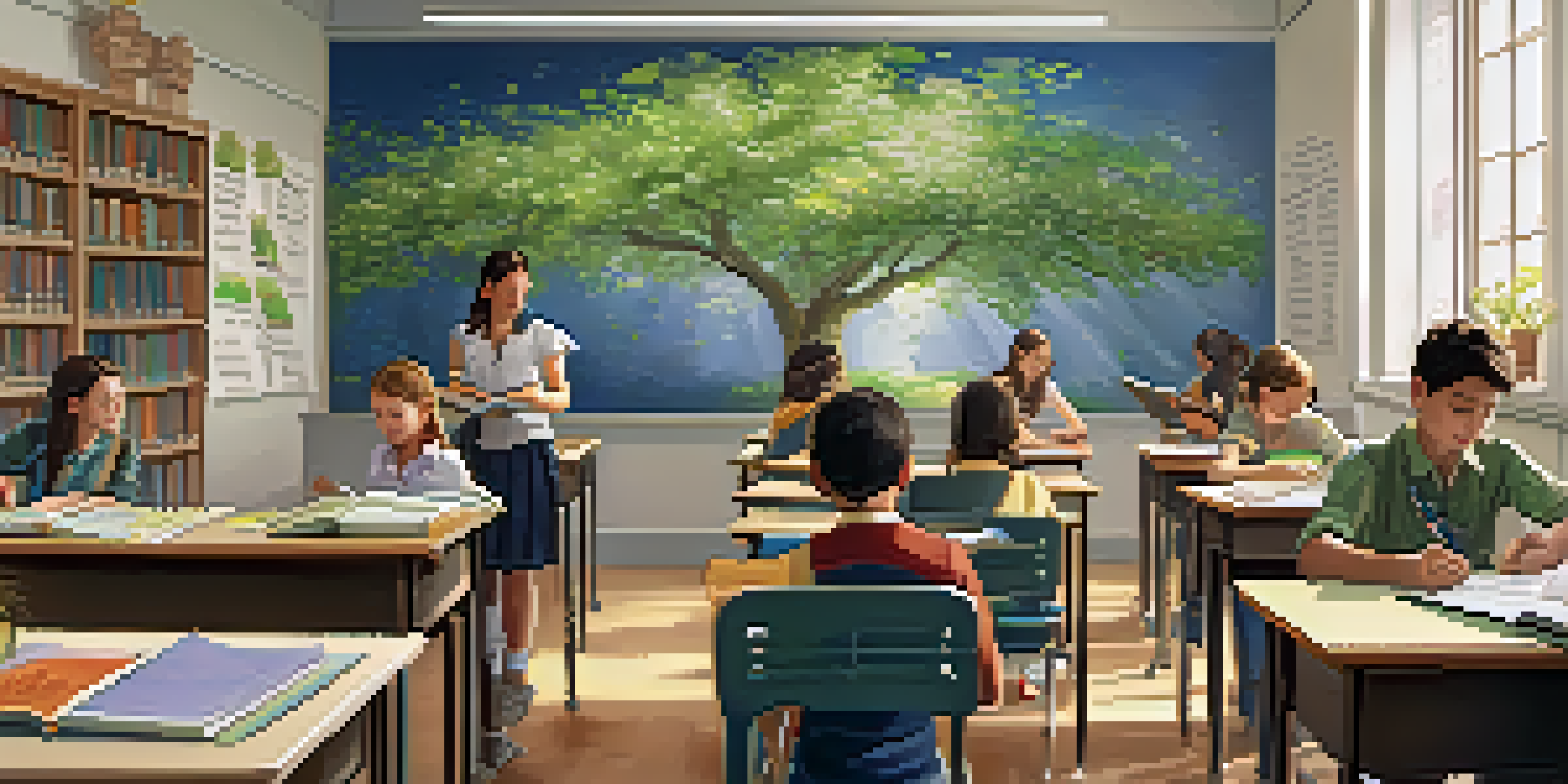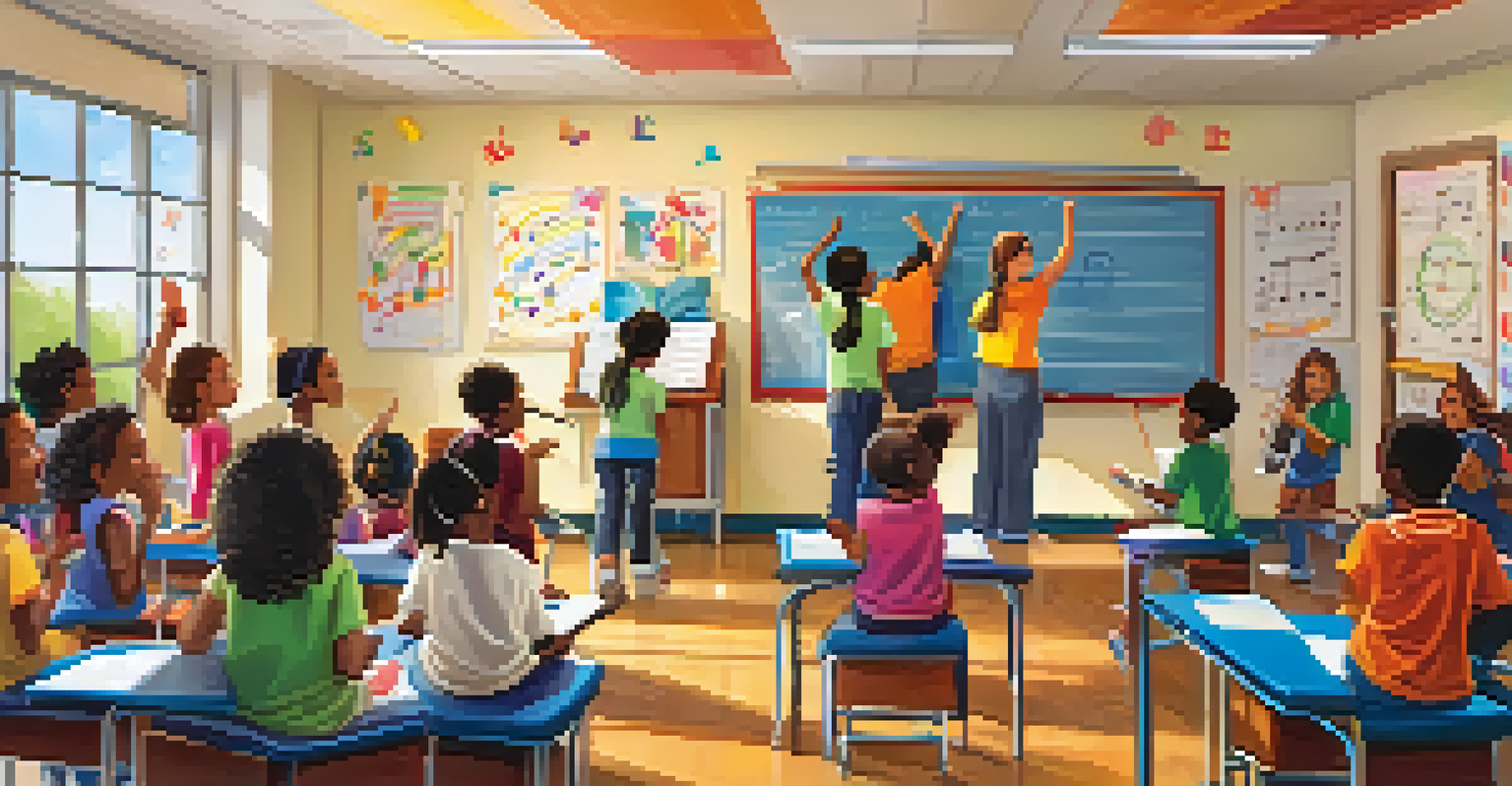Music as a Tool for Improving Memory in Educational Settings

The Science of Music and Memory Connection
Research shows that music can significantly enhance memory retention. When we listen to music, our brains release dopamine, which helps in creating stronger memory connections. This connection is particularly potent when music is paired with learning, making the information more memorable.
Music can change the world because it can change people.
For example, students often remember lyrics from their favorite songs better than facts from textbooks. This phenomenon occurs because the melody and rhythm create a framework that our brains can latch onto, making recall easier. It’s like using a catchy jingle to remember a phone number.
Thus, integrating music into educational settings not only makes learning enjoyable but also effectively boosts memory retention. By tapping into this natural connection, educators can create a more engaging and impactful learning experience.
Types of Music That Enhance Learning
Not all music is created equal when it comes to learning. Generally, instrumental music, especially classical or ambient genres, is found to be the most beneficial. Without lyrics to distract, these types of music create a calming atmosphere that can aid concentration.

A study conducted on students revealed that those who listened to soft classical music performed better on memory tests compared to those in silence. This suggests that the right type of music can foster an environment conducive to learning.
Music Boosts Memory Retention
Listening to music while learning can enhance memory retention by creating stronger connections through emotional engagement and repetition.
Ultimately, the goal is to find the right balance. While some students may thrive with classical tunes, others might prefer upbeat tracks. It’s important to experiment and see what works best for individual learning styles.
Creating a Musical Learning Environment
Integrating music into the classroom doesn’t have to be complicated. Teachers can start by playing soft background music during independent study time or while students work on projects. This simple change can help create a focused atmosphere that promotes learning.
The beautiful thing about learning is that no one can take it away from you.
Moreover, educators can also incorporate music into lessons directly. For instance, using songs that relate to the subject matter can enhance engagement and understanding. Imagine learning about the water cycle through a fun, catchy song – it makes the information stick!
In essence, creating a musical learning environment is all about being intentional. By thoughtfully weaving music into the day, educators can enhance students’ learning experiences and memory retention.
Music and Emotional Connections in Learning
Music has a unique ability to evoke emotions, which plays a crucial role in memory retention. When students associate positive feelings with music, it can enhance their overall learning experience. This emotional connection can make the information more relatable and easier to remember.
For example, think about a memorable moment in your life – often, there’s a song that reminds you of that time. This is because the emotional response tied to the music reinforces the memory. In the classroom, this can translate to students recalling lessons more effectively when they are emotionally engaged.
Instrumental Music Aids Focus
Instrumental genres, like classical music, provide a calming atmosphere that helps students concentrate better during study sessions.
Therefore, incorporating music that resonates emotionally with students can create a deeper learning experience. It’s not just about facts; it’s about making connections that last.
The Role of Repetition in Musical Learning
Repetition is a key component in both music and memory. Just as we listen to our favorite songs on repeat, repeating information helps solidify it in our minds. This principle can be effectively applied in educational settings, where music can serve as a mnemonic device.
For instance, using a melody to teach multiplication tables allows students to remember the facts through repetition and rhythm. The more they hear the song, the more familiar the concepts become, transforming rote memorization into an enjoyable activity.
Thus, leveraging repetition through music not only aids memory but also makes learning feel less like a chore and more like a fun challenge.
Music as a Motivation Tool for Students
Music can serve as a powerful motivator in educational settings. When students are excited about a lesson, they are more likely to engage and remember what they’ve learned. Incorporating music can create an energetic atmosphere that fuels motivation.
Think about how a lively song can uplift your mood. In the same way, playing an upbeat track can energize students, making them more enthusiastic about their studies. This boost in morale can lead to better engagement and improved educational outcomes.
Music Motivates Student Engagement
Incorporating music into lessons can energize students, fostering a more enthusiastic and engaging learning environment.
By using music strategically, educators can inspire students not just to learn, but to enjoy the process. This intrinsic motivation can lead to deeper understanding and retention of the material.
Practical Tips for Using Music in the Classroom
Integrating music into the classroom can be simple and effective with a few practical tips. First, create a playlist of appropriate tracks that align with your lesson plans. Having a go-to selection can streamline the process and ensure that the music enhances the learning experience.
Additionally, encourage students to share their musical preferences. This not only fosters a sense of community but also allows for a diverse range of music that can cater to different learning styles. It’s a win-win situation!

Finally, be mindful of volume levels. The music should complement the learning environment, not overpower it. By thoughtfully incorporating music, educators can create a vibrant atmosphere that promotes memory and engagement.